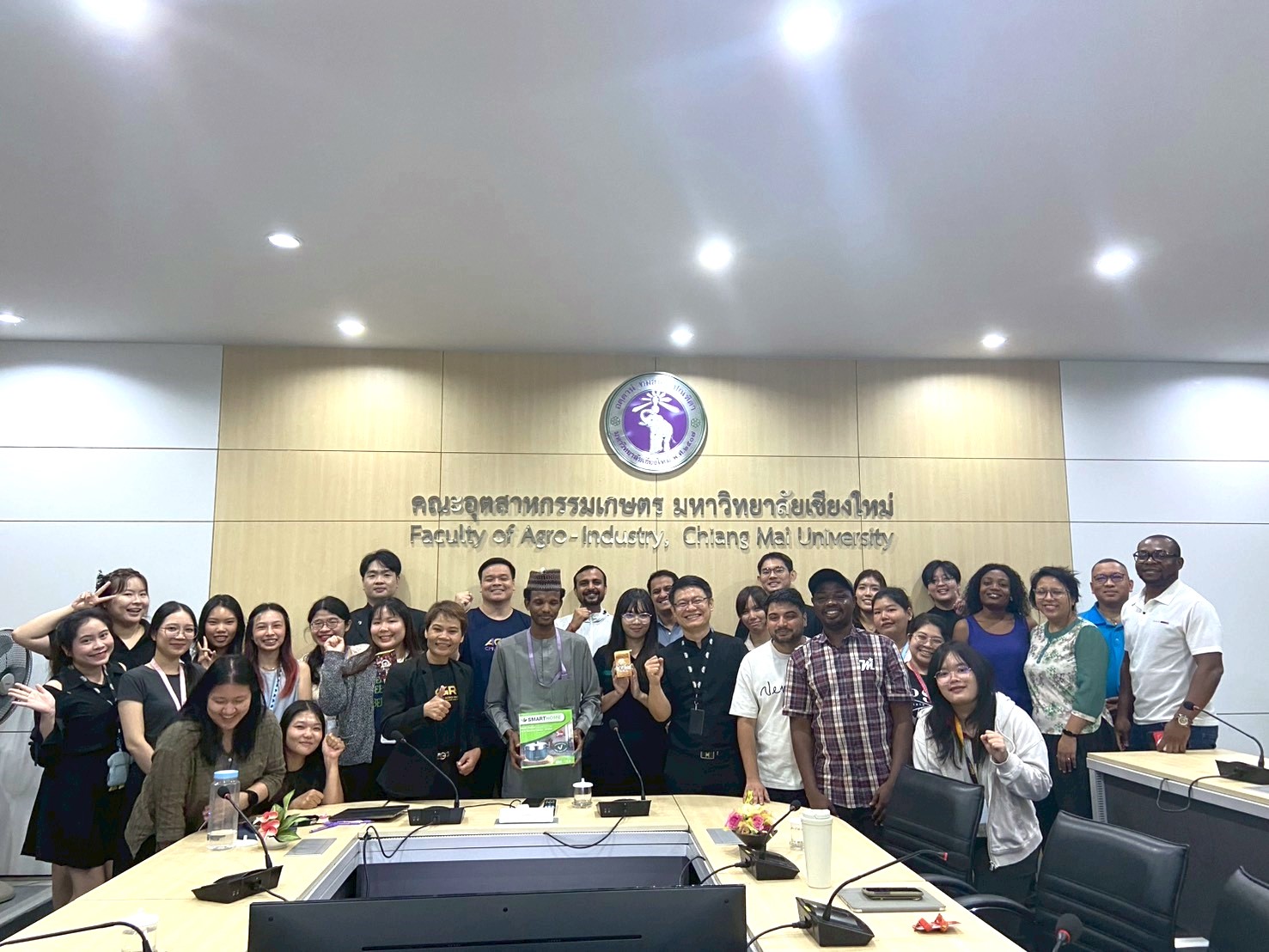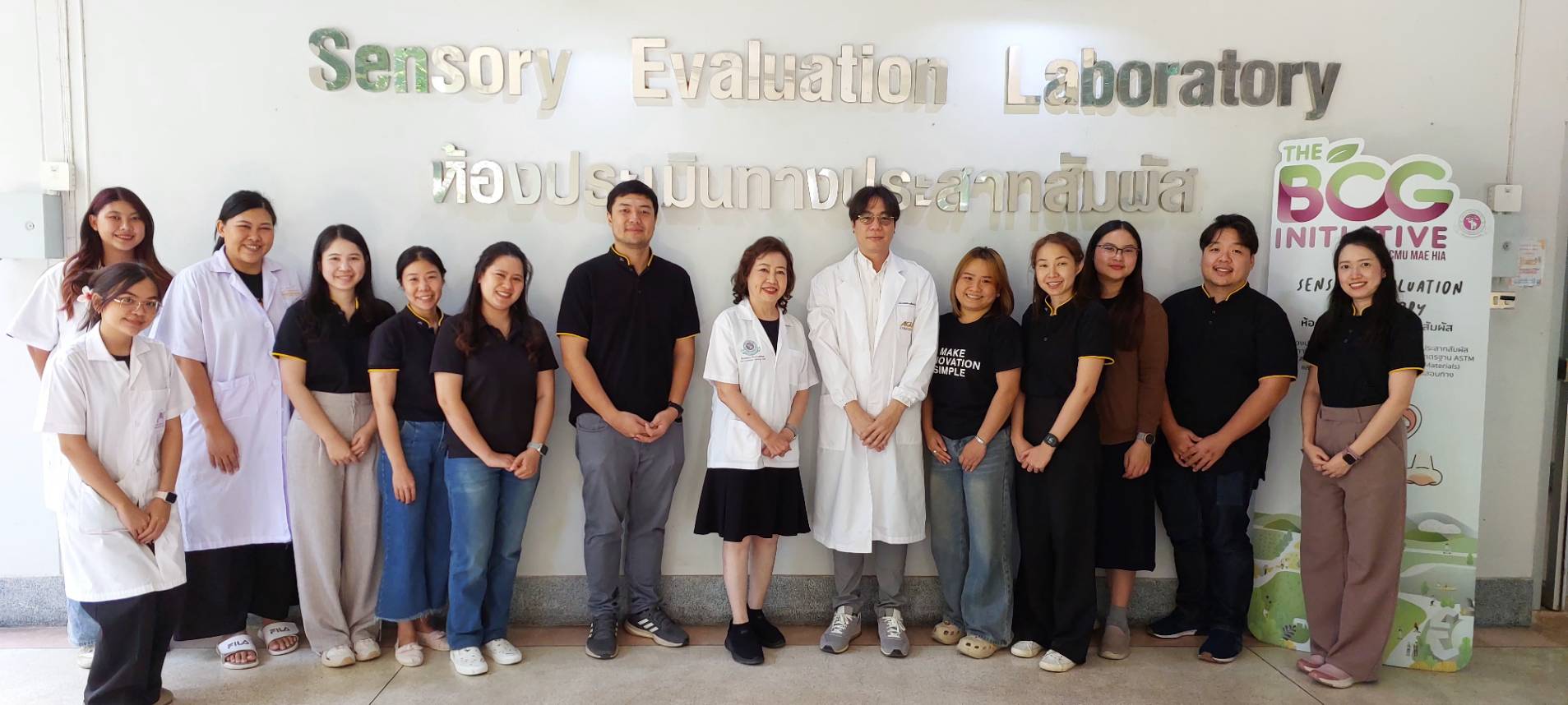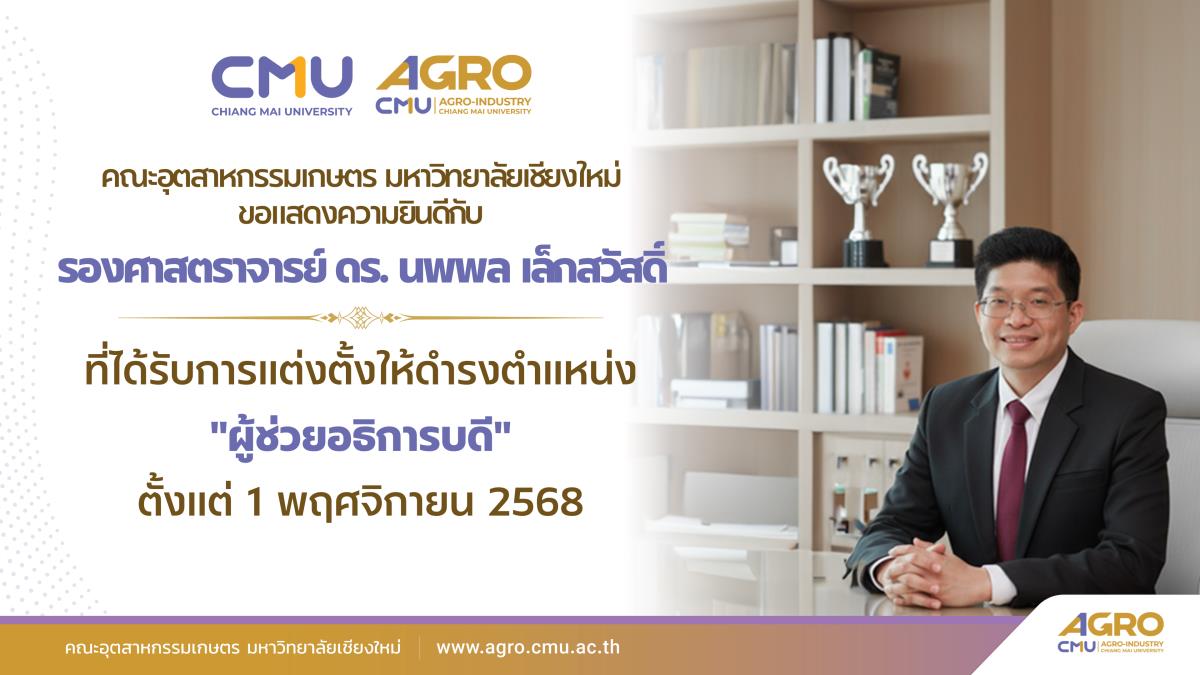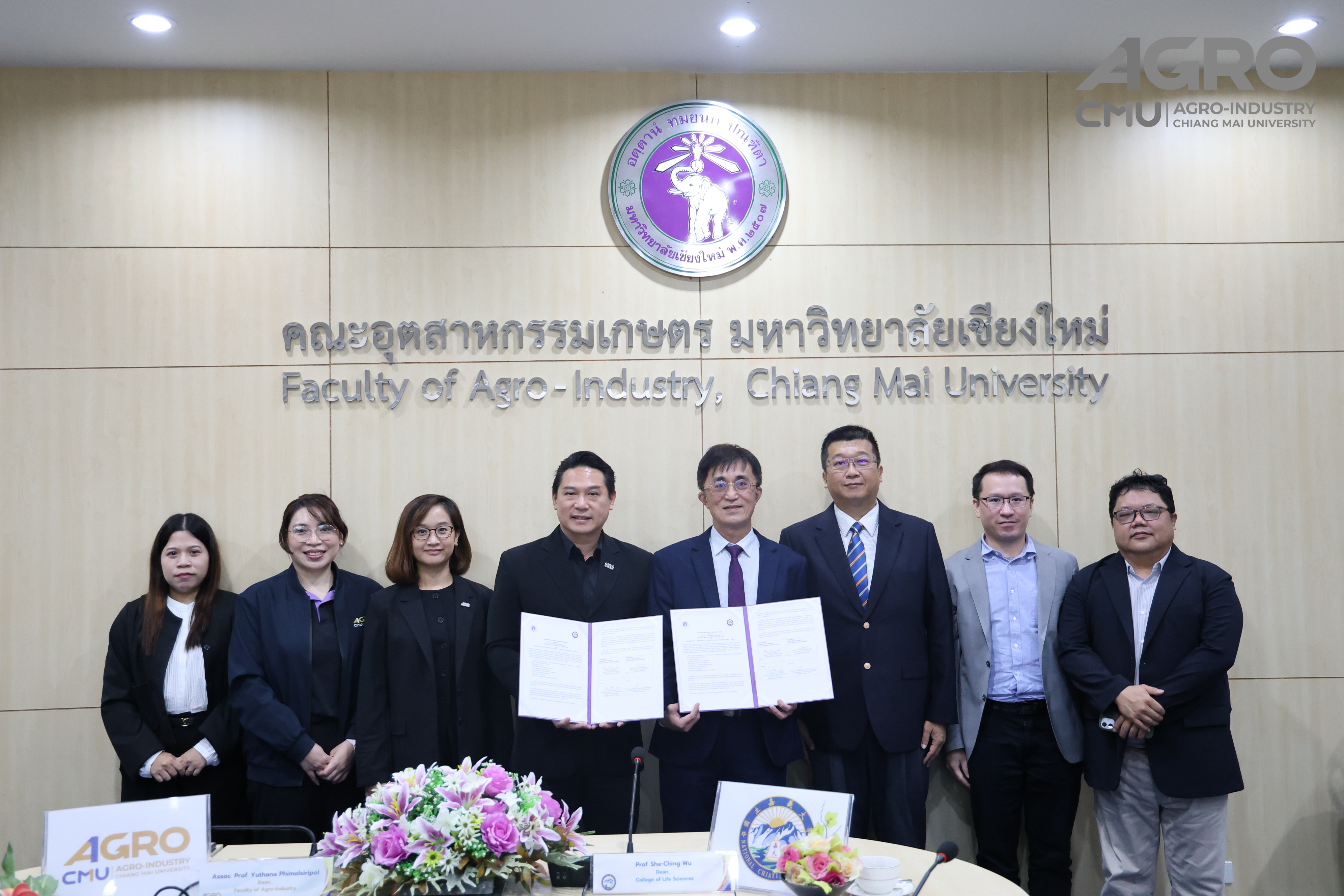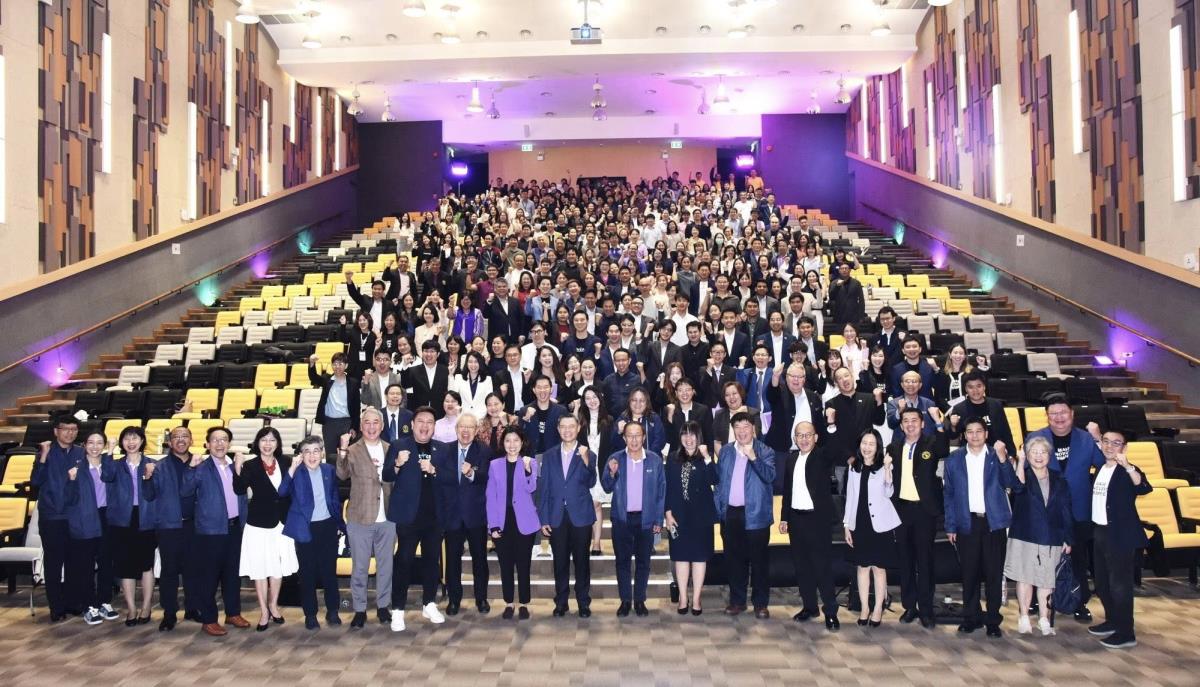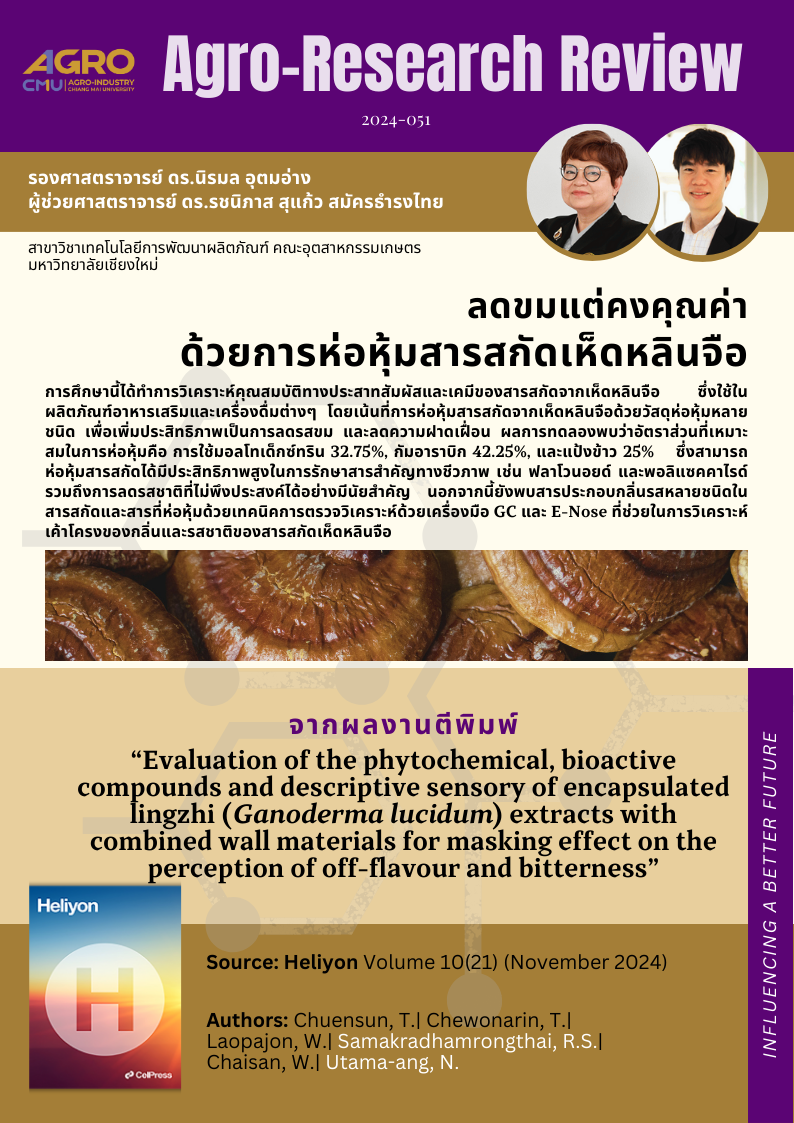
แนะนำงานวิจัย 2024-051: ลดขมแต่คงคุณค่า ด้วยการห่อหุ้มสารสกัดเห็ดหลินจือ
การศึกษานี้ได้ทำการวิเคราะห์คุณสมบัติทางประสาทสัมผัสและเคมีของสารสกัดจากเห็ดหลินจือ ซึ่งใช้ในผลิตภัณฑ์อาหารเสริมและเครื่องดื่มต่างๆ โดยเน้นที่การห่อหุ้มสารสกัดจากเห็ดหลินจือด้วยวัสดุห่อหุ้มหลายชนิด เพื่อเพิ่มประสิทธิภาพเป็นการลดรสขม และลดความฝาดเฝื่อน ผลการทดลองพบว่าอัตราส่วนที่เหมาะสมในการห่อหุ้มคือ การใช้มอลโทเด็กซ์ทริน 32.75%, กัมอาราบิก 42.25%, และแป้งข้าว 25% ซึ่งสามารถห่อหุ้มสารสกัดได้มีประสิทธิภาพสูงในการรักษาสารสำคัญทางชีวภาพ เช่น ฟลาโวนอยด์ และพอลิแซคคาไรด์ รวมถึงการลดรสชาติที่ไม่พึงประสงค์ได้อย่างมีนัยสำคัญ นอกจากนี้ยังพบสารประกอบกลิ่นรสหลายชนิดในสารสกัดและสารที่ห่อหุ้มด้วยเทคนิคการตรวจวิเคราะห์ด้วยเครื่องมือ GC-E-Nose ที่ช่วยในการวิเคราะห์เค้าโครงของกลิ่นและรสชาติของสารสกัดเห็ดหลินจือ
This study analyzed the sensory and chemical properties of Lingzhi (Ganoderma lucidum) extract, commonly used in dietary supplements and beverages. The focus was on encapsulating the extract using various wall materials to enhance its effectiveness while reducing its bitterness and astringency. The experimental results indicated that the optimal encapsulation formulation consisted of 32.75% maltodextrin, 42.25% gum arabic, and 25% rice starch, which effectively encapsulated the extract while preserving key bioactive compounds such as flavonoids and polysaccharides. This formulation also significantly masked undesirable flavors. Furthermore, an analysis using GC-E-Nose technology identified various flavor compounds in both the raw extract and the encapsulated samples, providing deeper insights into the aroma and taste profile of Lingzhi extract.
Topic: Evaluation of the phytochemical, bioactive compounds and descriptive sensory of encapsulated lingzhi (Ganoderma lucidum) extracts with combined wall materials for masking effect on the perception of off-flavour and bitterness
Authors: Chuensun, T.| Chewonarin, T.| Laopajon, W.| Samakradhamrongthai, R.S.| Chaisan, W.| Utama-ang, N.
Abstract:
Lingzhi mushroom (Ganoderma lucidum) is known as a medicinal mushroom that can be utilized in various functional foods available in the market, including powders, dietary supplements, and tea. However, its use is limited due to factors such as bitterness, flavour, and astringency. The objective of this study is to characterize and quantify the sensory profile of Lingzhi mushroom samples (fresh, dried and Lingzhi extracts) using quantitative descriptive analysis and investigate the physicochemical and sensory properties of encapsulated Lingzhi extracts using different ratios of wall material (maltodextrin, gum Arabic and modified starch from rice flour). The optimal ratio for encapsulation involved 32.75 % maltodextrin, 42.25 % gum Arabic, and 25 % modified starch w/w. Three parallel experiments were performed under practical conditions, resulting in average encapsulation efficiencies of 88.39 ± 0.09 % for flavonoids 89.53 ± 0.06 % for polysaccharides and 0.31 ± 0.01 of water activity. The sensory descriptive analysis indicated the following ratings: brown sugar aroma (4.36 ± 0.17), earthy aroma (22.04 ± 0.12), nutty aroma (2.00 ± 0.01), fresh mushroom aroma (11.18 ± 0.19), dried Lingzhi aroma (3.08 ± 0.13), black tea aroma (4.50 ± 0.19), salty taste (1.00 ± 0.01), earthy flavour (23.14 ± 0.22) and Mushroomy (after taste) (2.06 ± 0.09), respectively. The flavour identified of Lingzhi extracts and encapsulated by gas chromatography electronic nose (GC-E-Nose). The result showed ten flavour compounds (Acetaldehyde, Methanethiol, Propanal, propane-2-one, Methyl acetate, 2-methyl propanal, Ethyl Acetate, Heptane, 1-Butanamine, 2-methyl butanal, Thiophene). Optimizing the encapsulation conditions has a significant impact on reducing off-flavours and bitterness. Comparing the flavour profiles of Lingzhi extracts with encapsulated Lingzhi extracts using gas chromatography electronic nose (GC-E-Nose). Encapsulation technology represents a burgeoning field that holds immense potential in ensuring the stability of functional ingredients and facilitating their incorporation into instant beverage products.
Keywords: Encapsulation; Gas chromatography electronic nose (GC-E-Nose); Lingzhi mushroom (Ganoderma lucidum); Sensory descriptive analysis (DA)
View at publisher: https://www.sciencedirect.com/science/article/pii/S2405844024161257?via%3Dihub
#อกมช. #agrocmu #CMU
